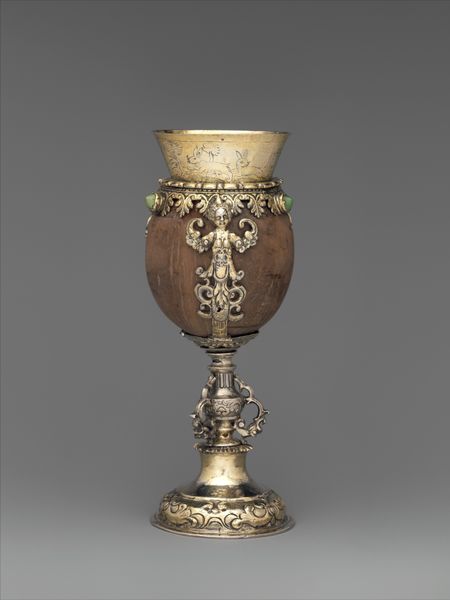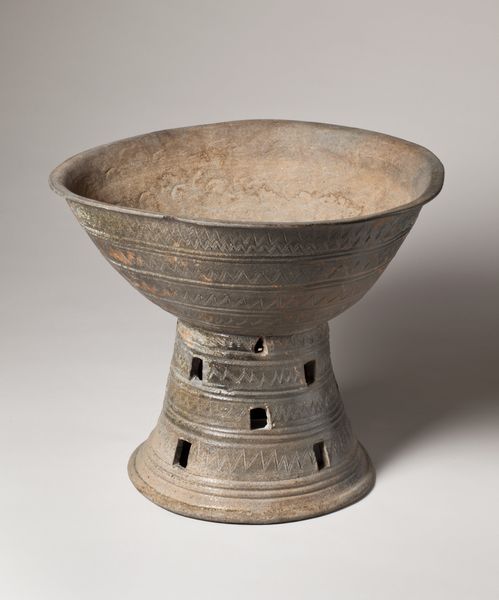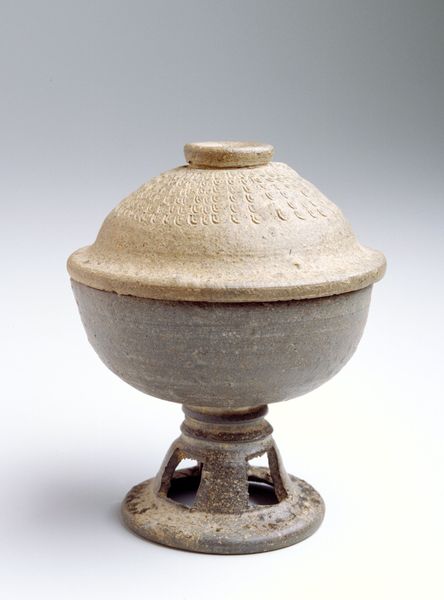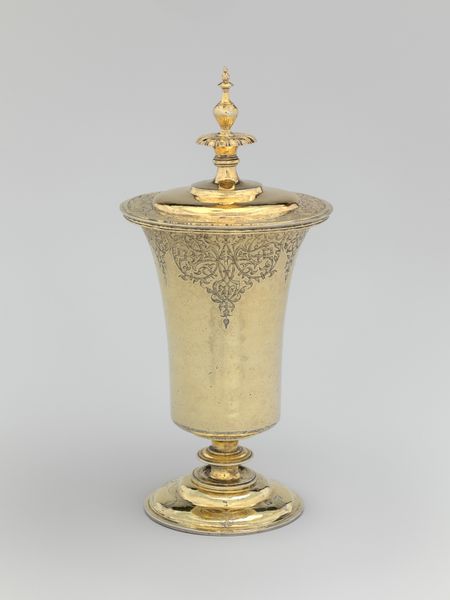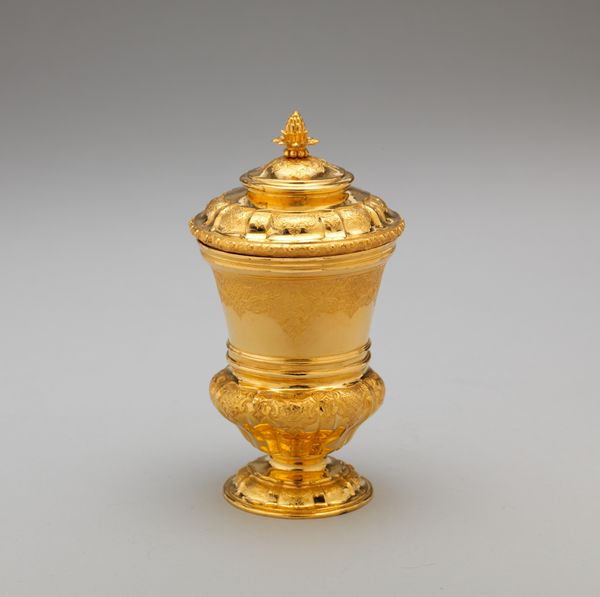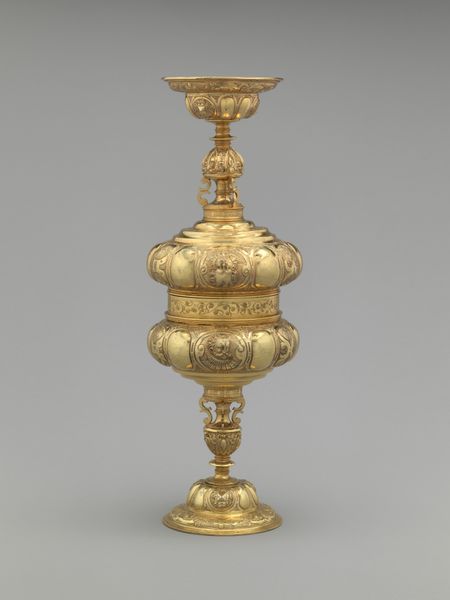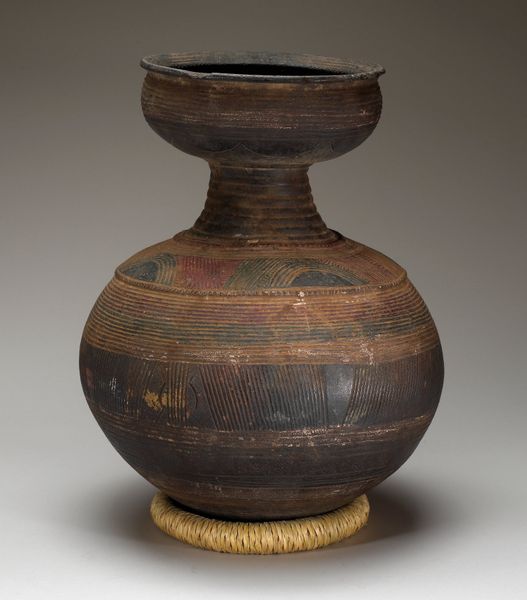
relief, ceramic, earthenware
#
greek-and-roman-art
#
relief
#
ceramic
#
figuration
#
earthenware
#
ancient-mediterranean
#
decorative-art
Dimensions: 57 × 43 × 20 cm (22 3/8 × 16 7/8 × 7 7/8 in.)
Copyright: Public Domain
Editor: This earthenware Lebes, a stemmed bowl with a lid dating back to around 725 BCE, made by an Ancient Etruscan, is really striking. There's a lovely symmetry to it, but also an interesting narrative quality in the friezes around the bowl. What stories can you tell from the perspective of its place in society? Curator: It's fascinating to consider this Lebes not just as a vessel, but as a cultural artifact embedded in Etruscan society. Stemmed bowls like this held significant ceremonial importance. Think about where this would have been displayed. Not in just anyone's home. It might appear in an elite banquet or even a tomb. How would the display and usage of such an object influence public perception of power and social hierarchies in Etruscan communities? Editor: So it was basically communicating status? The relief designs too? Curator: Exactly. The figuration on the bowl likely carries symbolic weight, reflecting religious beliefs or perhaps even family lineage. Consider the socio-political forces at play in Etruria at this time, and how they're manifested through this artwork. The bowl also emulates some contemporary Greek artistic styles, it reflects their growing sphere of influence and possibly a social aspiration in this region. Editor: That's interesting – so the bowl isn’t just about what it *is*, but what it *represents* culturally and politically at the time. How its appearance affects their public image. Curator: Precisely! Objects such as this were very carefully crafted to carry heavy symbolic weight. Consider too how the very act of acquiring or commissioning such a piece could have bolstered an individual’s or family's prestige. Editor: I had been so focused on the craftsmanship, but considering its place within Etruscan society gives the Lebes a whole new layer of meaning. Thanks. Curator: Indeed! Art history isn't just about dates and artists; it is a crucial tool to help understand past societies through surviving cultural works.
Comments
No comments
Be the first to comment and join the conversation on the ultimate creative platform.
